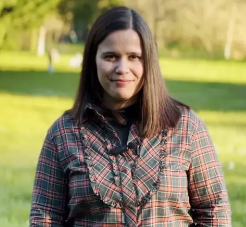Degree: Doctor
Bio
Ana T. S. C. Brandão obtained her MSc in Chemical Engineering from the Faculty of Engineering of the University of Porto in 2013. She got her PhD in Chemistry at the Faculty of Sciences of the University of Porto under the supervision of Professor Carlos M. Pereira and Dr Renata Costa, in 2024. Ana T. S. C. Brandão participated in research involving preparing and characterizing carbon materials and using deep eutectic solvents for electrodeposition metals and metallic alloys (NanocoatIL and Novtinalbest M-ERA.NET projects). Her current research focuses on electrochemical characterization of ionic liquids and ionic liquids analogs (deep eutectic solvents) and solid-state electrolytes for energy storage applications using high surface area carbon materials, being associated with IL4ENERGY research project ((02/SAICT/2017- POCI-01-0145-FEDER-032294) 'Ionic Liquids under nanoconfinement for advanced energy applications'). Her current work is being developed in association with the Center for Surface Science and Nanotechnology (CSSNT) at the University Politehnica of Bucharest, Romania, Instituto de Investigaciones Marinas from Consejo Superior de Investigaciones Cientificas (CSIC), Spain, and the McNulty Group from Bernal Institute, University of Limerick, Ireland. The main research interests are metal electrodeposition using ionic liquids and analogs as electrolytes, including metallic nanoparticle deposition on carbon materials; carbon materials synthesis and modification for the increase of surface area; surface characterization through atomic force microscopy and scanning electron microscopy, electrochemical double layer of deep eutectic solvents electrolytes (liquid and solid-state). Ana Brandão has 20 published papers and 1 Conference paper in peer-reviewed journals (h-index 9, citations Scopus 313) and speaker in 18 talks.
Projects
This CIQUP member does not yet have any projects linked with him.Publications
Showing 5 latest publications. Total publications: 23
Show all publicationsArticle, Indexed in: crossref, scopus, wos DOI: 10.1016/j.talanta.2023.125284
 P-00Z-8D1
P-00Z-8D1
Article, Indexed in: crossref, scopus, wos DOI: 10.1016/j.biortech.2024.131065
 P-010-NJE
P-010-NJE
Article, Indexed in: crossref, scopus, unpaywall, wos DOI: 10.1016/j.aca.2023.341168
 P-00Y-7RZ
P-00Y-7RZ
Article, Indexed in: crossref, scopus, unpaywall, wos DOI: 10.1021/acsomega.3c00816
 P-00Y-GVC
P-00Y-GVC
Article, Indexed in: crossref, scopus, unpaywall, wos DOI: 10.1016/j.electacta.2023.142653
 P-00Y-KJS
P-00Y-KJS

